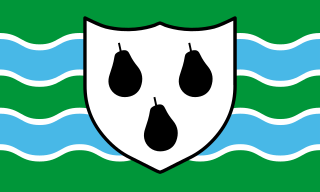
Worcestershire is a county in the West Midlands of England.

Malvern Hills is a local government district in Worcestershire, England. Its council is based in the town of Malvern, and its area covers most of the western half of the county, including the small towns of Tenbury and Upton. It was originally formed in 1974 and was subject to a significant boundary reform in 1998. In the 2011 census the population of the Malvern Hills district was 74,631.

Abberley is a village and civil parish in north west Worcestershire, England.

Areley Kings is a Worcestershire village on the River Severn 10 miles north of Worcester in the picturesque area of the Wyre Forest. The area is featured in the Domesday Book and many historical places of interest, like Areley Hall, are open to visitors. Nearby Stourport-on-Severn grew during the Victorian era and is still very popular with tourists and holiday makers all year round for canal and river cruising and for the many well signed walks through some of the finest Worcestershire countryside.

Leigh is a village and civil parish in the Malvern Hills district of the county of Worcestershire, England.
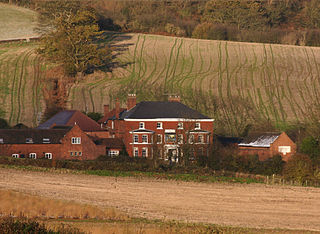
Great Witley is a village and civil parish, in the Malvern Hills District in the northwest of the county of Worcestershire, England. It is situated around ten miles to the north west of the city of Worcester.

Martley is a village and civil parish in the Malvern Hills district of the English county of Worcestershire. It is approximately nine miles north-west of Worcester. The population of the village is approximately 1,200 people. The mixed farming of the area includes arable, formerly cherry, apple, damson orchards and hopyards.
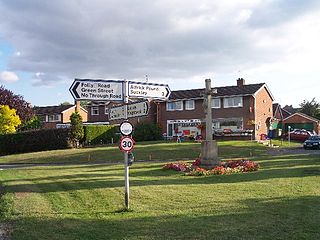
Alfrick is a village and civil parish in the Malvern Hills district of Worcestershire, England, about seven miles west of Worcester.

Broadwas, or Broadwas-on-Teme, is a village and civil parish in the Malvern Hills district of Worcestershire, England. According to the 2001 census it had a population of 307. The village is located on the River Teme, about 6 miles west of Worcester on the A44 road.
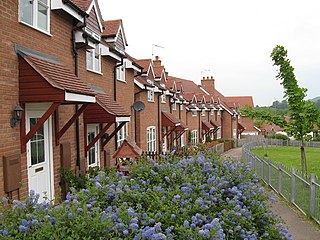
Suckley is a village and civil parish in the Malvern Hills District in the county of Worcestershire, England, close to the border with Herefordshire. The parish includes the hamlets of Suckley Knowl, Suckley Green at SO719532 and Longley Green at SO733503.
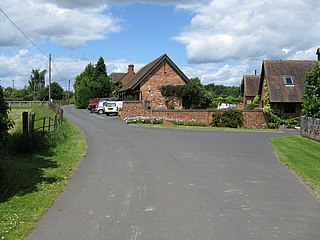
Holt is a village in the Wychavon district of the county of Worcestershire, England. The church is dedicated to St. Martin, and dates from about the 12th century. Holt Bridge, over the River Severn, was designed by Thomas Telford, and opened in 1830.
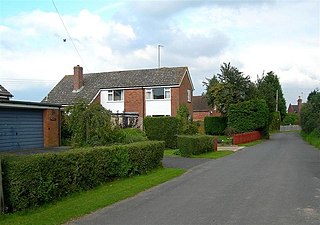
Little Witley is a village and civil parish in the Malvern Hills District in the county of Worcestershire, England.

Astley is a village, and a civil parish in Worcestershire, England, about two miles outside Stourport-on-Severn and seven miles south-west of Kidderminster.
Hillhampton is a hamlet and civil parish nestled between Great Witley, Little Witley and Shrawley in the Malvern Hills district of the county of Worcestershire, England. It was anciently a detached hamlet of the parish of Martley.
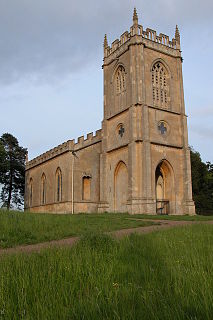
Croome D'Abitot is a village and civil parish, which shares a joint parish council with Severn Stoke, in the Malvern Hills District in the county of Worcestershire, England. The parish church of St Mary Magdalene is situated in the grounds of Croome Court.

Anthony Keck (1726–1797) was an 18th-century English architect with an extensive practice in Gloucestershire, Worcestershire, Herefordshire and South Wales.
The Hundred of Doddingtree was granted to Ralph Todeni, or Ralph de Toni, a relative of the Duke of Normandy, in 1066 by William the Conqueror as a reward for his services as Standard bearer during the Norman Conquest. It consisted mainly of west Worcestershire.
Following the Poor Law Amendment Act 1834 individual parishes ceased to be responsible for maintaining the poor in their parish. Poor law unions were established. In west Worcestershire the Martley Poor Law Union was established to take the poor from the following parishes Abberley, Alfrick, Astley, Bransford, Broadwas, Clifton-upon-Teme, Cotheridge, Doddenham, Great Witley, Grimley, Hallow, Holt, Knightwick, Leigh, Little Witley, Lulsley, Martley, Pensax, Shelsley, Shrawley, Suckley and Wichenford.
Samuel Thorp, or Thorpe, was a clockmaker born in Madeley, Shropshire. He was baptized 6 January and became apprenticed in 1780 to a renowned Shrewsbury Clockmaker Robert Webster. On 20 December 1790 he married Mary Newall at Ford, Shropshire. Samuel Thorp died in 1838 and was buried in Abberley Churchyard in Worcestershire on 15 February. Mary joined him there on 19 February 1843.

Shelsley Beauchamp or Great Shelsley is a village and civil parish 9 miles (14 km) north west of Worcester, in the Malvern Hills district, in the county of Worcestershire, England. In 2011 the parish had a population of 192. It is on the opposite bank of the River Teme to Shelsley Walsh. The parish touches Clifton upon Teme, Great Witley, Martley, Shelsley Kings and Shelsley Walsh. It shares a parish council with Shelsley Kings and Shelsley Walsh called the Shelsley Parish Council.



















